Trout are a favorite game fish for anglers all over the world. Their elusive tactics and strong fights make them extremely fun to catch. Trout are present on every continent besides Antarctica, so anywhere an angler wants to target them, they can. Plus, there are many different types of ways to target them that all lead to success.
Fly, traditional spin, and ice fishing are the primary ways anglers can fish for trout. Anglers mainly use artificial flies, lures, and live bait when fishing for them. Trout live in cool, clear water, spend most of their time near structures and cover in slack water.
Fishing for trout can be a lifelong hobby as long as you’re aware of the best ways to fish for them.
Fly Fishing
Many argue that fly fishing is the most “authentic” way to fish for trout. The primary trout targeted with a fly rod are rainbow, brown, brook, bull, and cutthroat.
Rainbow trout is, in fact, the most common trout to be targeted. I’ve covered this in-depth in my article on the most common trout to be caught.
Since so much of their diet consists of eating insects, using artificial flies gives anglers a phenomenal chance to land fish.
Whether the fish feed on or below the surface, fly fishing allows anglers to target them anywhere in the water column.
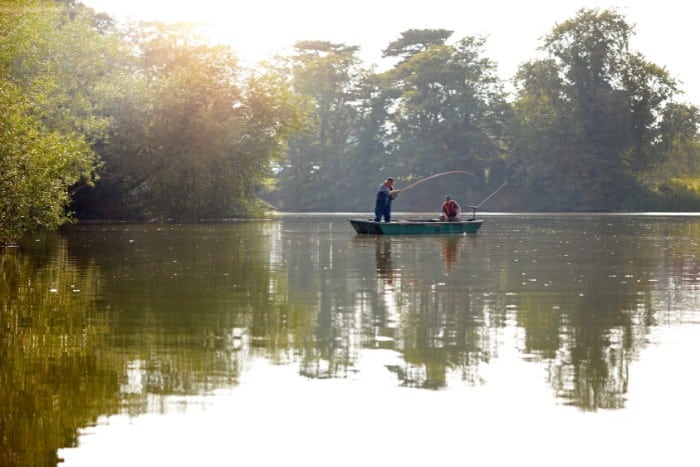
Techniques & Tips
It takes time to learn how to best fly fish for trout. Each body of water is different, so the more time you can spend on the water, the more success you’ll have.
1. Fishing for Trout in Rivers
Anglers should look for more slack water when fly fishing for trout. Slack water is the slower-moving water in rivers and streams where trout like to sit.
They don’t want to exude too much energy unless they’re searching for food. As a result, anglers should be looking for pools, eddies, and pockets of slack water.
Once you locate the proper water, it’s important to present your fly properly. To present your fly properly, cast it upstream of where you want it to eventually get.
The faster the current, the more upstream you’ll have to cast. Once your fly is upstream, ensure it’s leading the way and not your fly line.
You may have to “mend” your fly line above your fly to ensure it’s in the proper place. Your fly will drift downstream and look like an artificial fly hatching or falling into the water.
Make sure the slack from your fly line is reeled up.
As soon as you get a strike, you’ll have to strip set (a quick tug of the fly line), and if you have too much out into the water, the fish may be able to shake your fly before you get the tension.
2. Fishing for Trout in Lakes
If you’re fishing in still water, look for cover and structure. Trout will cruise around in shallow water as long as they know the structure is nearby.
They want to find crustaceans, insects, and other smaller fish. Once you find a structure, cast your fly near it. As soon as it hits the water, give it a few seconds to settle, and then begin the retrieve.
Depending on the day, you may find that the trout want a faster or slower retrieval. This is for you to learn as you’re fishing. Vary the retrieve until you find a style that works.
3. General Tips & Tricks
If you see a rise (trout surfacing), make sure you switch to throwing dry flies. Rises mean they’re feeding on the surface, so getting in on the action is best.
Stay patient if you’re fishing a good-looking pool or eddie. Oddly, fish are sitting in it, but you may not have found the exact drift they may want. Give yourself time to figure it out.
Do some research on flies and patterns that are working before you hit the water. Whether visiting a local fly shop or looking online, finding a river’s hatch chart will help you determine the patterns to use.
Do your best to “match the hatch.” Matching the hatch means using flies directly representing what is hatching on the water when fishing.
Gear
Fly fishing for trout requires more gear than most other fishing methods. It’s important to have all of the necessities if you want the best chance at consistently landing these fish.

1. Rods
Most trout caught are between 10-25 inches. As a result, anglers aren’t needing to use massive fly rods to land them.
Anglers should use a 3-weight or 4-weight rod for smaller streams and smaller trout. These rods are a bit more sensitive and give anglers a chance to be as careful and delicate with their casts as they would like.
The rods should be between 7 and 9 feet long, depending on the casting lanes available. These smaller stream rods can be moderate, moderately fast, or fast action.
For more medium-sized rivers, anglers should stick with 4-weight to 6-weight rods. You may need more power for larger fish and longer casts.
These rods should be between 8′ and 9′, depending on the style of fishing you will be doing. A moderate or moderate fast-action rod will give you the power to make longer casts and fight those larger fish.
5-weight and 6-weight rods are the way to go for large rivers and lakes. These should be 8’6″ or 9′ long. You may need the power to make 60 or 70-foot casts and fight fish over 20 inches long.
A moderate fast or fast action setup is the way to go. If you want to do some Euro Nymphing, a 3-weight 10′ or 11′ Euro Nymph rod is a good choice.
These rods allow you to fish smaller bodies of water and get the fly out directly into the fish areas without making too many casts.
On that note, it’s time to check out my article on the best fishing rods for trout.
2. Reels
Whatever rod size you choose, make sure your reel matches the rod. For example, if you’re using a 6-weight rod, you will want to use a 6-weight reel. This helps with the overall balance of the rod.
Do check out my article on the best reels for trout fishing.
3. Line, Leader, Tippet
Similar to the reel, you want whatever fly line you use to match the size of the rods and reels. A 6-weight rod and reel setup should have a 6-weight floating or sink tip line.
A floating line is great for rivers, streams, and any still water where the fish feed on the surface. The sink tip line is a good choice if you find yourself fishing for trout in deeper water.
Lakes and big rivers often require it. The proper leader choice depends on the type of flies you’re using. A 0x or 1x 7′ leader will work well if you’re fishing with streamers.
If you’re fishing with nymphs and dry flies, a 3x or 4x 9′ leader is what you should be using. Tippet is used when fishing with nymphs and dries.
This thin monofilament line keeps you hidden from spooky trout. Be prepared with a tippet that ranges from 3x to 6x, depending on the clarity and spookiness of the fish.
Flies
Trout will eat dry flies, nymphs as well as streamers. Choosing the proper fly for the trout you’re targeting is one of the toughest choices.
Some common streamer patterns for trout are Woolly Buggers, Muddler Minnow, Clouser Minnow, Bunny Leech, Crayfish, Lefty’s Deceiver, and the Jawbreaker.
Some common nymph patterns for trout are Pheasant Tail Nymphs, Prince Nymphs, Stonefly Nymphs, RS-2, Zebra Midge, JuJu Baetis, San Juan Worm, and Frenchies.
Some common dry fly patterns include Elk Hair Caddis, Adams Flies, Chubby Chernobyl, Parachute Adams, Stimulators, Rusty Spinner, Griffith’s Gnat, and Pale Morning Duns.
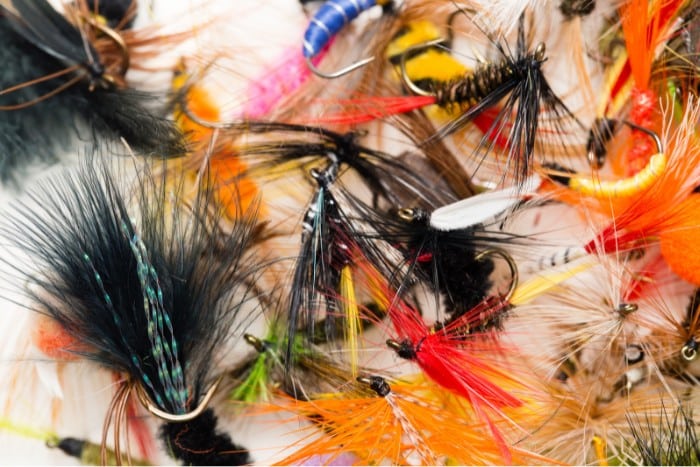
Spin Fishing
Spin fishing is a more simple way to fish for trout. The places you’ll fish and your techniques aren’t overly different from fly fishing. It just looks different.
Spin fishing for trout is especially common in lakes. Spin fishing is the best option if you’re fishing for lake trout. These fish sit deep, and spin gear is the best way to get to them.
All other species, like rainbows, browns, brook, cutthroat, and bull trout, can be caught on a spinning rod.
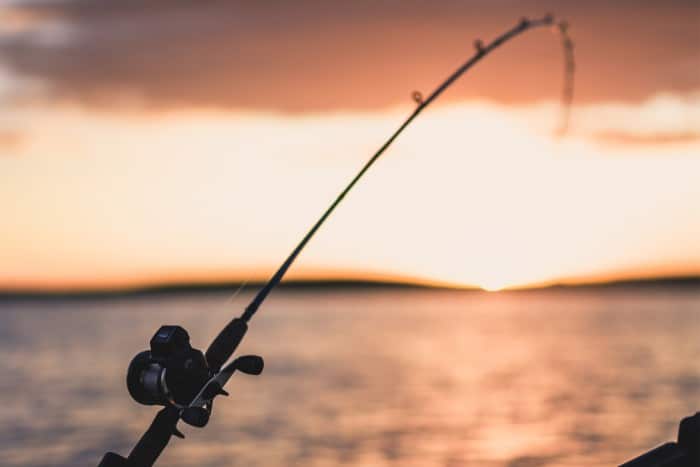
Techniques for Lake Trout
When fishing for lake trout, you will use different methods than what you would use for other types of trout. In the spring, lake trout are up in the shallows feeding.
They may only be 3 or 4 feet deep, so be prepared to fish shallow. In the warmer months, they will be concentrated in deeper water. They want to be by sunken islands, humps, and gravel bars.
Once you’ve located them, you’re going to drop your bait to them. Drop your bait into the fishy-looking areas and begin your retrieve, whether it’s live bait or lures.
They hit lures and live bait just as hard as other trout. Another common method to use when fishing for lake trout is trolling.
Trolling with smaller flashy lures in deeper water sections allows you to cover as much water as you want throughout the day.
Techniques for Other Trout
Other trout, like the rainbow and brown trout, require some different methods than lake trout.
1. Fishing for Trout in Rivers
When you’re spin fishing for trout in rivers, look for pools and seams in the river. Odds are, you’re going to be fishing with lures that are going to sink fast.
As a result, it can be challenging to fish those shallow riffles. Cast your lure onto the front end of a seam or a pool and let it sink for a few seconds.
As it drifts towards your desired location, begin the retrieve. You want the fish to chase your lure. A slower retrieve will give them more time to do so, but sometimes they may want a faster retrieve.
With spin gear, fish for lake trout in the mid-morning, early evening, and late at night while the trout still feed under the surface. This is when they’re going to want to strike those larger lures.
2. Fishing for Trout in Lakes
In lakes, spin fishing allows you to fish at all levels of the water column. Find cover and structure, and work from there. Cast your lure right near the cover and structure and let it fall for a few seconds.
If you can get your lure deep to start, you can work your way up from there. Your lure’s shininess and movement will entice all the fish in the area to strike.
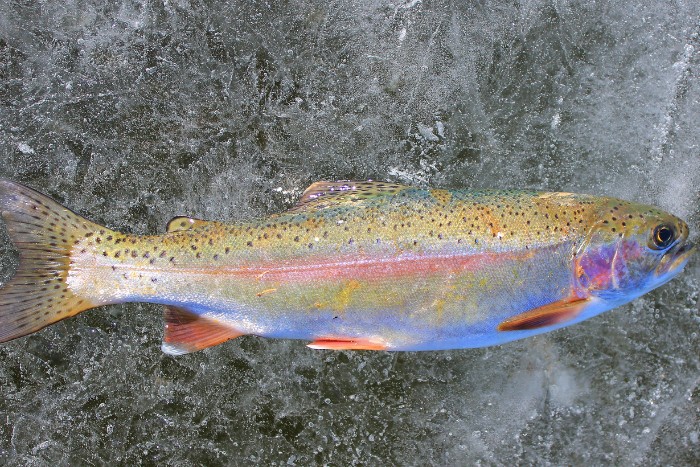
General Tips & Tricks
Fish the lower reaches of river systems if you’re spin fishing for trout. Generally, most of the baitfish will be concentrated in the lower reaches.
Don’t feel you must aggressively set the hook when fishing for trout. As soon as you feel a tug, quickly lift your rod, and you’ll likely have hooked it. They have soft mouths, so hooking them doesn’t take much.
Gear
Spin fishing for trout doesn’t require an overly complicated setup. You will mostly be using lightweight gear that’s easy to control.
1. Rods
If you’re fishing for brown, rainbow, bull, cutthroat, and brook trout, you will use a 6′ or 7′ light spinning rod. You need a finesse setup; this size rod will best help you.
If fishing for lake trout, you’ll want to use a 7 to 9-foot medium-fast action rod. These will give you enough power to handle those large fish that may strike.
2. Reels
You’ll want a 2500 or 3000-size reel when fishing for the smaller versions of trout. You can use up to a 4000-size reel for lake trout since it can handle a bit more line.
3. Line
You can use a 4 to 6-pound monofilament fishing line for most trout species. Monofilament line is going to keep you hidden in those especially clear waters. The 4-6 pound test is going to handle most fish.
If you’re going after lake trout, use at least 8-10 pound monofilament. You may need to use larger ones depending on the size of lake trout you will find.
Lures/Bait
Some of the best lures for trout are Mepps Spinners, Bucktail Jigs, Flutter Spoons, Panther Martins, Worden’s Original Rooster Tail, Blue Fox Vibrax, and Marabou Jigs.
Depending on where you’re fishing, live bait may be allowed when fishing for trout. Worms and minnows are the best live bait options when you’re spin fishing for trout.
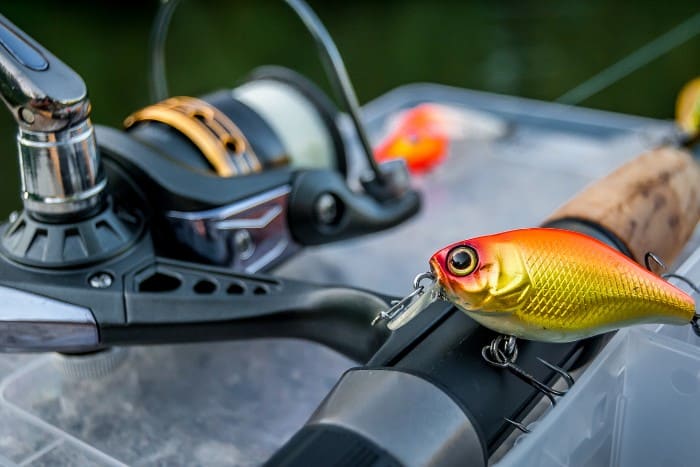
Ice Fishing
Ice fishing is another common method anglers use to fish for trout. When lakes and ponds freeze over, trout generally move toward deeper water.
When it comes time to feed, it’s not uncommon for them to cruise weed lines and shorelines in search of minnows or any crustaceans.
For live bait, wax worms and minnows are the two best bait options. The Acme Kastmaster, Swedish Pimple, the Rapala Jigging Shad Rap, and tungsten jigs will all work well for lures.
A medium 24 to 36-inch rod will work out quite well when ice fishing for trout. Pair this with a 4 to 6-pound test monofilament line.
Conclusion
Trout are one of the world’s most exciting species of fish to catch. They always keep anglers on their toes due to their seemingly endless indecisiveness.
Some days, they’re extremely hungry and will eat just about anything you throw their way, and other days, you can’t find them.
Stay patient, find slack water, and do your best to throw them exactly what they want to eat. Once you do figure out how to catch trout, it’s an addicting hobby that sticks around for life.
